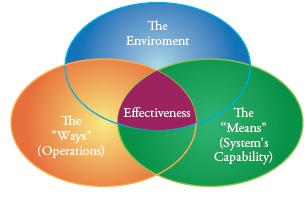Application of Operational Effectiveness Models in Naval Ship concept exploration and design
DOI:
https://doi.org/10.25043/19098642.80Keywords:
ship design, operational effectiveness models, systems engineeringAbstract
Traditionally, the Concept and Requirements Exploration process is the first stage of ship design. Concept and Requirements Exploration responds to a stated mission need with early high-level assessment of a broad range of ship design options and technologies. Our design group uses a Multi-Objective Optimization approach to explore the design space and identify non-dominated designs ranked by cost, risk, and effectiveness. Our method of calculating effectiveness in this approach has, in the past, been based on expert opinion. In this study, the use of a more direct physics-based Operational Effectiveness Model approach is considered to provide greater confidence in the validity of effectiveness results and a perception that results are more unbiased and rational. This approach requires significant early investment. How much analysis is enough and is there significant payoff for this significant effort? This paper presents this approach and explores these questions.
Downloads
References
ANDREWS, DAVID, “Requirements Elucidation as the Task of initial Naval Ship Design”, AVTET-132 Presentation, December 2012.
BELTON, V., “A comparison of the analytic hierarchy process and a simple multi-attribute value function”, European Journal of Operational Research, 1986.
BROWN, A.J., THOMAS, M., "Reengineering the Naval Ship Concept Design Process", From Research to Reality in Ship Systems Engineering Symposium, ASNE, 1998.
BROWN, A.J., SALCEDO, J., "Multiple Objective Genetic Optimization In Naval Ship Design", Naval Engineers Journal, Vol. 115, No. 4, pp. 49-61, 2003.
BROWN, A.J., “Multi-Objective Optimization in Naval Ship Concept Design”, Marine Systems and Technology (MAST) 2010 Conference, Rome, Italy, 9-11 November, 2010.
BUEDE, DENNIS, “A Primer for Model-Based Systems Engineering”, Vitech Corporation, February, 2011.
DEMKO, D., “Tools for Multi-Objective and Multi-Disciplinary Optimization in Naval Ship Design”, MS Thesis, Virginia Tech, May 2005.
DoD, DoD 5000.01, 12 May 2003, “The Defense Acquisition System”
DoD, DoDI 5000.02, 2 December 2008, “Operation of the Defense Acquisition System”
DoD, DoDAF 2.0, DoD Architecture Framework, Version 2.02, http://cio-nii.defense.gov/sites/dodaf20/index.html, 2011.
FOX, JASON, “A Capability-Based, Meta-Model Approach to Combatant Ship Design”, MS Thesis, NPS, May 2011.
GOMEZ-TORRES, JOSE, M., “Warship Combat Systems Selection Methodology Based on Discrete
Event Simulation", Master’s Thesis, NPS, 2010.
JONS, OTTO, “Operator and Designer Interaction in the Early Acquisition Phase”, AVT-ET-132 Presentation, December 2012.
KERNS, COREY M., “Naval Ship Design and Synthesis Model Architecture Using a Model-Based Systems Engineering Approach”, Master’s Thesis, Virginia Tech, May 2011.
MIERZWICKI, T., BROWN, A.J. (2004), “Risk Metric for Multi-Objective Design of Naval Ships”, Naval Engineers Journal, Vol. 116, No. 2, pp. 55-71.Phoenix Integration, Model Center, Version 10, 2012.
Naval Warfare Development Command (NWDC), “Naval Mission Essential Task List (NMETL) Development Handbook,” June 2000.
SAATY, T.L., The Analytic Hierarchy Process, RWS Publications, Pittsburgh, 1996.
SHAHAK, SHMUEL, “Naval Ship Concept Design: an Evolutionary Approach”, MS Thesis, Department of Ocean Engineering, Massachusetts Institute of Technology, 1998.
SKOLNICK, FRED AND WILKINS, “Laying the Foundation for Successful Systems Engineering”, Johns Hopkins APL Technical Digest, Volume 21, Number 2, 2000.
STROCK, J., BROWN, A.J., “Methods for Naval Ship Concept and Propulsion System Technology Exploration in a CGX Case Study”, Naval Engineers Journal, Vol. 120, No. 4, pp. 95-122, 2008.
STEPANCHICK, J., BROWN, A.J., “Revisiting DDGX/DDG-51 Concept Exploration”, Naval
Engineers Journal, Vol. 119, No. 3, 67-88, 2007.
VITECH CORPORATION, “CORE DoDAF 2.0 Architecture Definition Guide”, August, 2010.
VITECH – CORE 7 Software, 2011

Published
How to Cite
Issue
Section
License
The authors who publish in this Journal certify that:
- The work submitted for publication in The Ship Science and Technology journal, was written by the author, given that its content is the product of his/her direct intellectual contribution.
- All data and references to material already published are duly identified with their respective credits and are included in the bibliographic notes and quotations highlighted as such.
- All materials submitted for publication are completely free of copyrights; consequently, the author accepts responsibility for any lawsuit or claim related with Intellectual Property Rights thereof, Exonerating of responsibility to The Science and Technology for the Development of Naval, Maritime, and Riverine Industry Corporation, COTECMAR.
- In the event that the article is chosen for publication by The Ship Science and Technology journal, the author state that he/she totally transfers reproduction rights of such to The Science and Technology for the Development of Naval, Maritime, and Riverine Industry Corporation, COTECMAR.
- The authors retain the copyright and transfer to COTECMAR the right of publication and reproduction of the work which will be simultaneously subject to the Creative Commons Attribution License (CC -BY) , which allows the license to copy, distribute, display and represent the work and to make derivative works as long as it recognizes and cites the work in the manner specified by the author or licensor.
- For more information about the Creative Commons Attribution License (CC -BY) and his use and scope, please visit the following web page https://creativecommons.org/licenses/by-sa/4.0/legalcode








